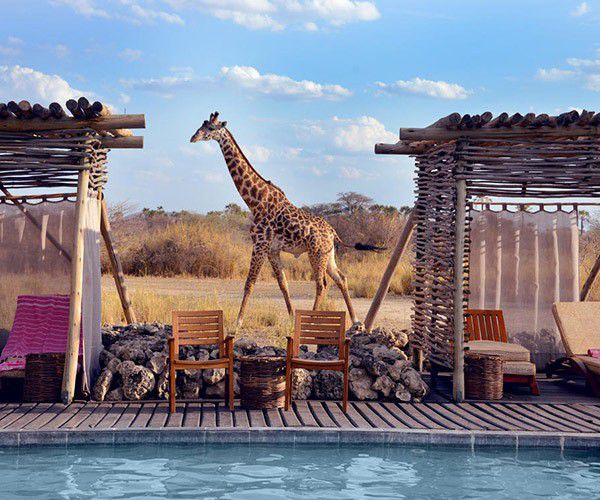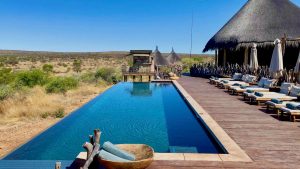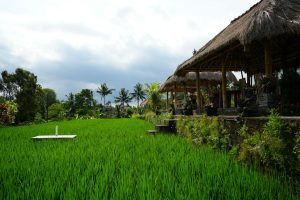
Tanzania is one of East Africa’s most beautiful countries. With exceptional wildlife opportunities and astonishing beach prospects, it is certainly no easy feat deciding on where to go.
Obviously the easy answer would be to say ‘everywhere’, but realistically, time and budget restraints mean you have to be selective in where to visit, which is why, if you are stuck in a bit of a conundrum, you must read on.
The North of Tanzania is one of the most famous places in the world, home to the Ngorongoro Crater and the Serengeti, it is no wonder that in normal years, people flood to these areas to come across Africa’s ‘Big 5’ and witness the world’s most incredible natural spectacle: The Great Wildebeest Migration.
Visiting these areas however takes time and often cannot be done on too little a budget. With park fees in the Serengeti over USD $100 per person per day, (and about double that for the Crater), the costs can quickly add up!
Due to the distances involved in getting to these wildlife areas, internal flights are the best mode of transport, and you must allow enough time to relax and enjoy the places you are staying. Two nights, with one full day in the Crater is more than enough time to get your Big 5 fix and tick-off some of those bucket-list animals. The Crater is the perfect place for those who have never been on safari before, but for those who have been lucky enough to enjoy a safari, the high number of vehicles during the peak season may be off putting, therefore a trip to Tarangire instead would be an excellent alternative. Home to a huge population of elephants and a drastically different landscape than the Serengeti, its serenity and peacefulness results in a very intimate safari experience. Nomad’s Kuro is perfect if you wish to experience and authentic bush camp, whilst Chem Chem offers all the bells and whistles one would expect from the most opulent hotel. Lesser seen animals like serval and aardwolf are often spotted in Tarangire making it a must-visit for seasoned safari goers.

The Serengeti is a must for anyone wanting to see the Great Migration. Contrary to popular belief, the migration stays in the Serengeti all year round, with only about a quarter of the wildebeest entering Kenya’s Masai Mara between July and October. River crossings can be seen in the Serengeti from July through to November with far less vehicles than you would see on the Kenyan side of the border. It is amongst the endless grassy plains that one can have that true ‘Out of Africa’ feel. Luxury tented camps shift throughout the year, following the wildebeest’s movements giving you a front row seat to this extraordinary spectacle. Classing this accommodation as a tent is an understatement though, camps like Olakira and Serengeti Safari Camp offer some of the most luxurious experiences one could have, whilst being under canvas ensures you an unforgettable stay. This is extreme glamping!

Although the North of Tanzania attracts the bulk of visitors and media headlines, the Southern parks of the country should certainly not be overlooked. For those with ample time and budget, heading to the South after a stay in the Serengeti will give you a perfectly rounded safari experience, however this is not always possible. The South offers an adventurous and quieter safari experience than would be expected in the North and fits perfectly with those wanting to include a beach retreat in their itinerary.
If you are on a very tight schedule and want to combine some rest and relaxation on the beach as well as a quick safari, heading to the Selous is the best option. Not only is Tanzania’s largest game reserve a hop-skip and a jump away from Zanzibar, but there are also some great value camps that offer stay-pay deals throughout the seasons. Sand Rivers is a stunning property with unrivalled views across the Rufiji River and it offers a 4for3 deal as well as a camp combination deal of 5for7 when combined with other Nomad camps in Tanzania. Boating safaris and searching for Africa’s most enigmatic carnivore, the wild dog, are the main draws of the Selous, and its abundance of water makes it a birder’s paradise.

If having an off the beaten track safari experience with very few other visitors appeals, then combining the Selous and Ruaha (the other National Park in Southern Tanzania) is a perfect choice. Both destinations complement each other beautifully due to their differences. Selous is a lush and green landscape comprising of a maze of waterways where boating safaris can be undertaken as well as vehicle and walking safaris. Ruaha on the other hand is a far drier and arid landscape where a baobab studded horizon is home to huge numbers of buffalo, elephant, and lions.
In the South of Ruaha, Jongomero sits all alone on the banks of a dry riverbed. The lack of other camps nearby ensures that seeing other people on game drive is as rare as a pangolin and means you will have a private and intimate game viewing experience. The option to fly camp also gives some extra adventure to your safari. Ikuka in the North of the Park offers uninterrupted views of Ruaha and its luxurious and lavish rooms are perfect for those looking to be pampered whilst out in the wilderness. Both camps offer 4for3 deals respectively giving any stay in Ruaha added bang for your buck.

Ultimately when deciding on where to go in Tanzania, budget and time restraints are the main factor, however what must also be taken into consideration is whether you want an off the beaten path safari experience with few other visitors and incredible game viewing, or whether you want to visit the world-famous hotspots for game viewing and marvel at the spectacles that they bring.
Marc Harris is Managing Director of Tanzania Odyssey. Tanzania Odyssey is a leading tour operator that has specialised in Tanzania since 1998.
If you would like to be a guest blogger on A Luxury Travel Blog in order to raise your profile, please contact us.






